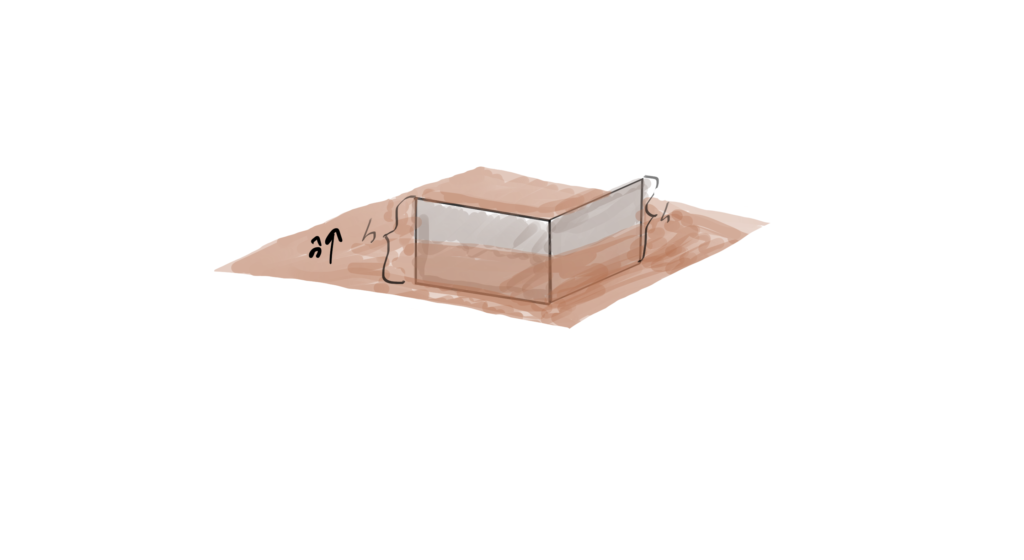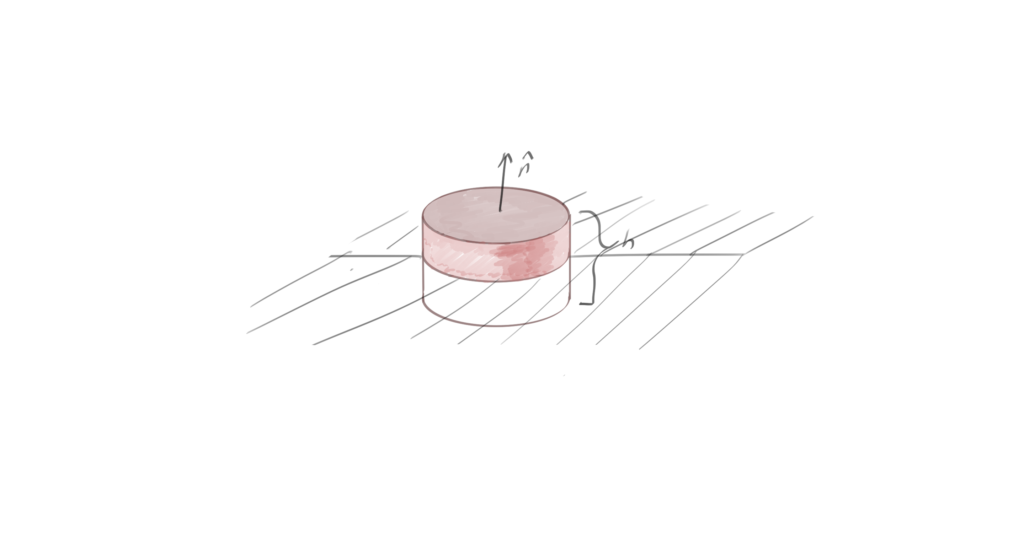I’ve been working on a Green’s function video series, available on both Odysee and the old legacy CensorshipTube. In this series, I am working from the great Dover book [1]. You can think of this book as a one stop shop containing most of the advanced mathematical tricks that any graduate student in physics or engineering would ever need.
I chose to leisurely visit most of the single variable Green’s function content from chapter 7 of this book in this video series, with focus on the damped forced harmonic oscillator problem
\begin{equation}\label{eqn:greens:20}
\LL x(t) = F(t),
\end{equation}
where
\begin{equation}\label{eqn:greens:40}
\LL = \frac{d^2}{dt^2} + 2 \gamma \frac{d}{dt} + \omega_0^2.
\end{equation}
In more pedestrian notation, this problem is the differential equation
\begin{equation}\label{eqn:greens:60}
x”(t) + 2 \gamma x'(t) + \omega_0^2 x(t) = F(t).
\end{equation}
Green’s function solution to the forced damped harmonic oscillator
In the first video, of what I thought would probably be three videos, we formally solve this problem, by attacking it with Fourier transform pairs
\begin{equation}\label{eqn:greens:80}
\begin{aligned}
\hat{f}(k) &= \inv{\sqrt{2\pi}} \int_{-\infty}^\infty e^{i k t} f(t) dt \\
f(t) &= \inv{\sqrt{2\pi}} \int_{-\infty}^\infty e^{-i k t} \hat{f}(k) dk,
\end{aligned}
\end{equation}
and find a specific solution to the forcing problem
\begin{equation}\label{eqn:greens:100}
x(t) = \int_{-\infty}^\infty G(t,t’) F(t’) dt’,
\end{equation}
where our convolution kernel (later shown to satisfy the Green’s function criteria) is
\begin{equation}\label{eqn:greens:120}
G(t,t’) = -\inv{2 \pi} \int_{-\infty}^\infty \frac{e^{-ik(t-t’)}}{k^2 + 2 i \gamma k – \omega_0^2} dk.
\end{equation}
We also find that the homogeneous solutions have the form
\begin{equation}\label{eqn:greens:140}
x(t) = e^{-\gamma t \pm i \alpha t},
\end{equation}
where \( \alpha = \sqrt{ \omega_0^2 – \gamma_2 } \).
Evaluating the Fourier convolution kernel for the forced damped harmonic oscillator
In the second video we proceed to dig out our coutour integration techniques and use them to evaluate the convolution kernel. I do a very quick non-rigorous refresher and justification of contour integration and residue analysis, and then proceed to tackle our convolution kernel, rewritten as
\begin{equation}\label{eqn:greens:160}
G(t,t’) = -\inv{2 \pi} \int_{-\infty}^\infty \frac{e^{-ik(t-t’)}}{\lr{k – k_1}\lr{ k – k_2}} dk.
\end{equation}
We evaluate this in top and bottom half plane infinite closed semi-circular contours (both of which include the real axis component that we are interested in). We find that the upper half semi-circular path is zero for \( t – t’ < 0 \), as is the entire integral, as it encloses no poles. We find that the lower half semi-circular path is zero for \( t – t’ > 0 \), so the real axis integral can be evaluated by computing the two residues. In the end we find
\begin{equation}\label{eqn:greens:180}
G(t,t’) = \Theta(t – t’) e^{-\gamma(t-t’)} \frac{\sin(\alpha (t – t’))}{\alpha}.
\end{equation}
Incidentally, we see that the Green’s function, in this case, is a Heavyside-theta weighted superposition of homogeneous solutions. Specifically, if
\begin{equation}\label{eqn:greens:200}
\begin{aligned}
x_1(t) &= e^{-\gamma t + i \alpha t} \\
x_2(t) &= e^{-\gamma t – i \alpha t},
\end{aligned}
\end{equation}
then
\begin{equation}\label{eqn:greens:220}
G(t,t’) = \Theta(t-t’) \lr{
\frac{x_1(-t’)}{2 i \alpha} x_1(t)
–
\frac{x_2(-t’)}{2 i \alpha} x_2(t)
}.
\end{equation}
This becomes relevant later in the series when we derive and utilize Wrokskian determinant form of the Green’s function.
Showing that the convolution kernel for the forced damped harmonic oscillator is a Greens function
In the third video, we demonstrate that the convolution kernel that we derived using Fourier transforms, and contour integration, is in fact a Green’s function for the problem. That is
\begin{equation}\label{eqn:greens:240}
\LL G(t,t’) = \delta(t- t’).
\end{equation}
This is a formal way of expressing the fact that the Green’s function is an inverse of the linear operator. Specifically, given
\begin{equation}\label{eqn:greens:260}
x(t) = \int_{-\infty}^{\infty} G(t,t’) F(t’) dt’,
\end{equation}
then application of our linear operator to both sides gives
\begin{equation}\label{eqn:greens:280}
\LL x(t) = \int_{-\infty}^{\infty} \LL G(t,t’) F(t’) dt’,
\end{equation}
so if \ref{eqn:greens:240} is true, we have
\begin{equation}\label{eqn:greens:300}
\LL x(t) = F(t),
\end{equation}
as desired.
Green’s function for a first order linear system: two different ways
My trilogy in four parts steps backwards slightly in preparation for examination of the Wronskian method of Green’s function construction. Here I tackle one of the simplest first order single variable systems, that of
\begin{equation}\label{eqn:greens:320}
\LL = \frac{d}{dt} + \alpha.
\end{equation}
We derive the Green’s function, first using the now familiar Fourier transform and contour integration methods, and then attempt to find the Green’s function by demanding that it has the structure of a piecewise superposition of homogeneous solutions, which is the method used in the book for second order systems. Since we have a first order system, our superposition is trivially simple, as it requires only scaling our homogeneous solution \( x_1(t) = e^{-\alpha t} \) in each of the domains
\begin{equation}\label{eqn:greens:340}
\begin{aligned}
G(t,t’) &= A x_1(t), \quad t – t’ > 0 \\
G(t,t’) &= B x_1(t), \quad t – t’ < 0.
\end{aligned}
\end{equation}
We find that
\begin{equation}\label{eqn:greens:360}
G(t,t’) = B e^{-\alpha t} + \Theta(t- t’) e^{-\alpha (t – t’) }.
\end{equation}
The second term is precisely what we found by direct Fourier transformation, and the first is related to the boundary conditions for the Green’s function itself, something that we address in the final video.
Wronskian form for the Green’s Function of a general 2nd order one variable differential equation
In this part of my trilogy in five parts, we derive the Wronskian form of the Green’s function for a second order differential equation. Given
\begin{equation}\label{eqn:greens:380}
\LL = f_0(t) \frac{d^2}{dt^2} + f_1(t) \frac{d}{dt} + f_2(t),
\end{equation}
and two homogenous solutions \( x_1(t), x_2(t) \), we find
\begin{equation}\label{eqn:greens:400}
G(t,t’) = \alpha x_1(t) + \beta x_2(t) +
\frac{\Theta(t- t’)}{f_0(t’)} \frac{
\begin{vmatrix}
x_1(t’) & x_2(t’) \\
x_1(t) & x_2(t) \\
\end{vmatrix}
}
{
\begin{vmatrix}
x_1(t’) & x_2(t’) \\
x_1′(t’) & x_2′(t’) \\
\end{vmatrix}
}.
\end{equation}
We use this to re-derive the Green’s function for the forced, damped, harmonic oscillator, finding the previous result from Fourier-transform and contour integration (provided we set \( \alpha = \beta = 0 \).)
Green’s function boundary value conditions
In this final sixth video, my channelling of Douglas Adams (trilogy in four and then five parts) fails completely. However, I do finally address boundary conditions for the Green’s function itself. I don’t use the damped forced harmonic oscillator, but the very simplest second order system
\begin{equation}\label{eqn:greens:420}
x”(t) = F(t).
\end{equation}
I chose this equation, and not the damped forced HO, because the Green’s function for this system was derived twice in the text by direct integration. Once for the single point boundary condition
\begin{equation}\label{eqn:greens:440}
\begin{aligned}
x(a) &= x_0 \\
x'(a) &= \bar{x}_0,
\end{aligned}
\end{equation}
and once for a two point boundary condition
\begin{equation}\label{eqn:greens:460}
\begin{aligned}
x(0) &= x_0 \\
x(1) &= x_1.
\end{aligned}
\end{equation}
I apply the Wronskian method to derive the Green’s function for this differential operator, which is just
\begin{equation}\label{eqn:greens:480}
G(t,t’) = \alpha + \beta t + \lr{t-t’} \Theta(t-t’),
\end{equation}
and then proceed to apply the pair of boundary conditions to the Green’s function, fixing the \( \alpha \) and \( \beta \) constants for each. There’s a bit of subtlety and hand waving required to get the right results, so it is probably worth repeating the problem for some more complex cases in the future and making sure that I do fully understand how this works. I am able to rederive the Green’s functions from the text for each of the two boundary condition cases.
This business of application of the boundary conditions to the Green’s function itself is very important, and as I found back when I took QM-I (phy356). If you don’t do it, then you get the wrong answers. Perhaps, now finally armed with a better understanding of the tools, I should go back, find that problem again and try it anew.
References
[1] F.W. Byron and R.W. Fuller. Mathematics of Classical and Quantum Physics. Dover Publications, 1992.

